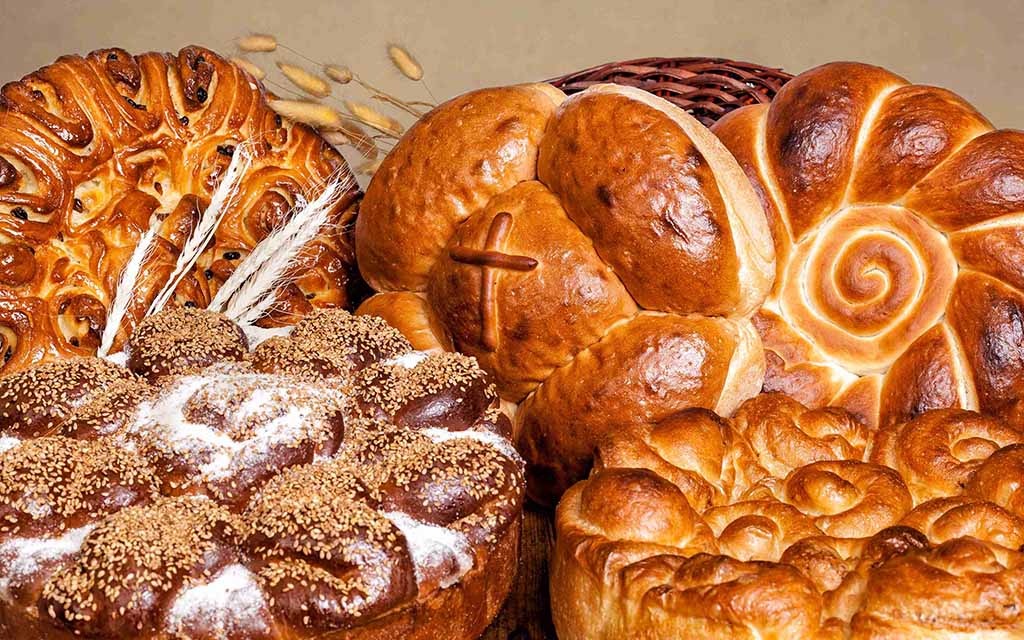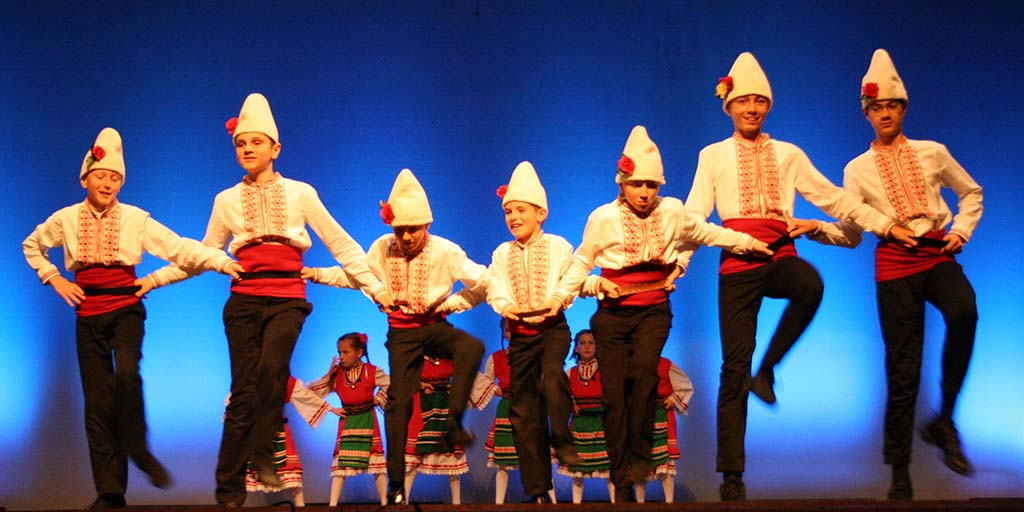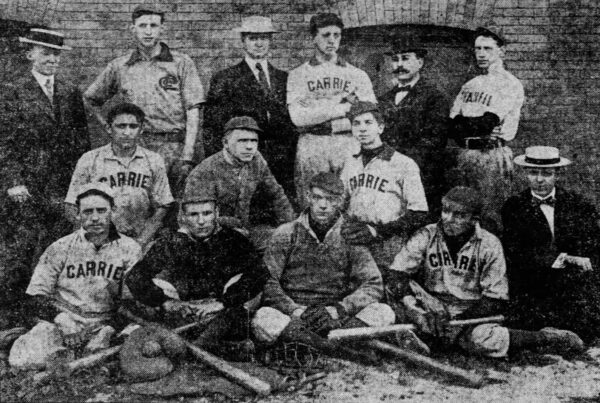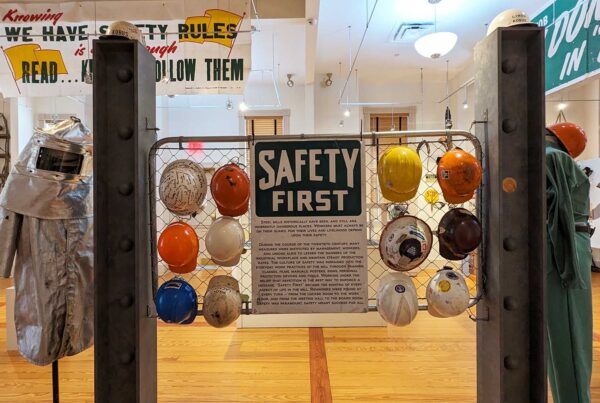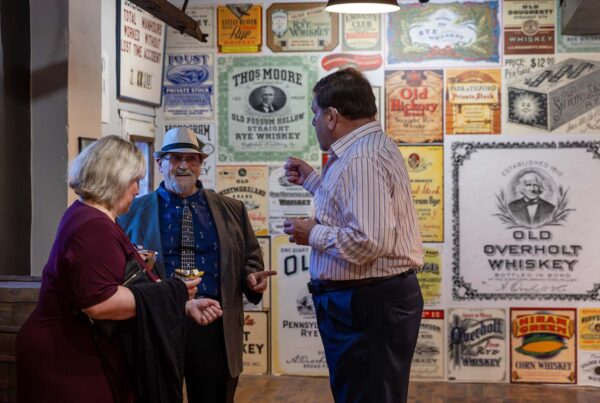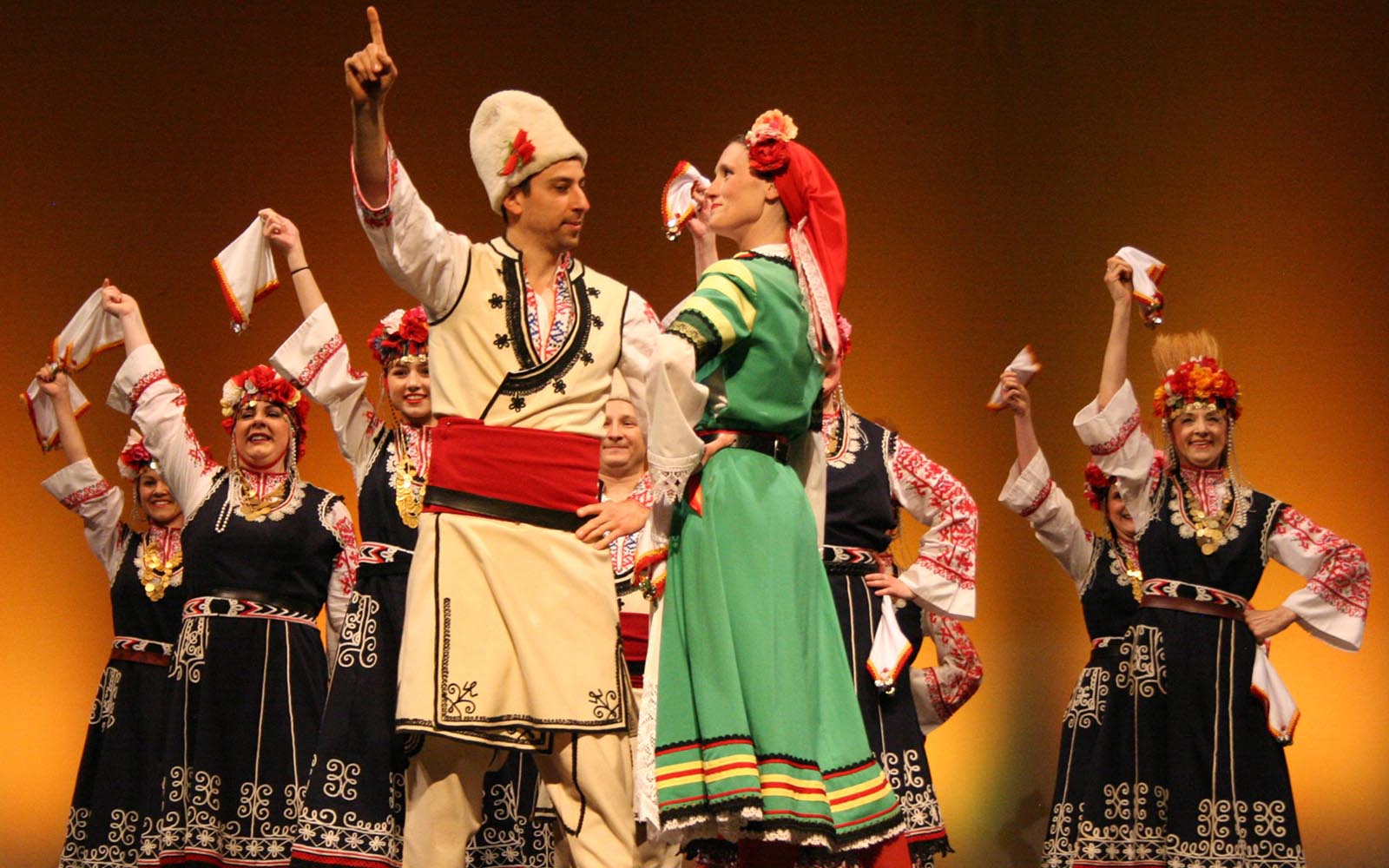
Otets Paissii Performing Folk Ensemble. All images courtesy of the BMNECC.
Heritage Highlights
Rivers of Steel’s Heritage Arts program strives to represent the region’s diverse cultural heritage, from ethnic customs and occupational traditions directly linked to Pittsburgh’s industrial past to new American folk arts and cultural practices emerging from the region’s diverse urban experience. Usually passed down from person to person within close-knit communities, these cultural traditions are as varied as they are unique, each representing one aspect of what makes southwestern Pennsylvania’s heritage so rich.
This month, Jon Engel popped down the street to 449 West Eighth Avenue in West Homestead, which has been home to the Bulgarian Macedonian National Educational and Cultural Center for nearly a century. There, he met a tight-knit—yet ever-expanding—community, bound by their rich folklife and universal love for food, music, and each other. He spoke with some of their members about the specific traditions that the Center seeks to preserve, why those traditions are valuable, and how they remain relevant to this day.
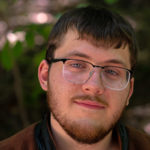
The Bulgarian Macedonian National Educational and Cultural Center
By Jonathan Engel
The Bulgarian Macedonian Club
Lambe Markoff immigrated to Pittsburgh in 1909. He was part of that vast generation of Eastern Europeans who came to the United States at the turn of the century, one of the working class immigrants from whom so many in this region now claim descent.
He brought his family over from Macedonia in 1912—his wife, daughter, and father. His descendants have lived in the Steel Valley area ever since. In 1930, Lambe and a group of other Bulgarian and Macedonian immigrants banded together to create the Bulgarian and Macedonian Benefit Association. They established themselves as one of many ethnic clubs that sprouted around this time. As new arrivals, they sought to make new lives in America, under the ashen sky of the steel city. Like other such clubs, the Association’s primary directives were to support their community and to preserve the arts and traditions of their home cultures. When Ed Markoff, Lambe’s grandson, tells me this, he is brimming with pride. Ed is 73-years-old—we spoke on his birthday. He has spent his life continuing his family’s legacy. He is the current president of the Bulgarian Macedonian National Educational and Cultural Center (BMNECC), the Association’s new form, still located in the original brick building in West Homestead.
Ninety-one years after the club was founded, while many other 20th-century ethnic clubs have closed, BMNECC has evolved into a multifaceted organization with a focus on community events and cultural education. The endurance of the Bulgarian and Macedonian folk culture in Pittsburgh is largely due to the efforts of people like Ed, who speak of their families and friends in poetry. But he is not alone. At BMNECC, a cohort of life-long locals and recent immigrants strive to maintain their ancestral traditions and unique histories, both of which transcend borders.
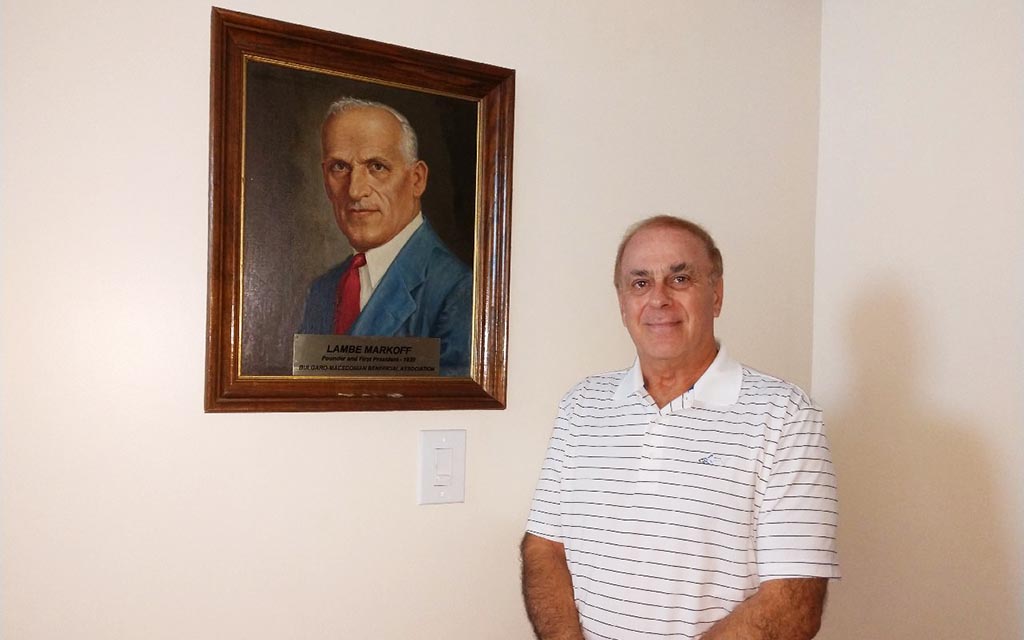
Ed Markoff with a portrait of Lambe Markoff.
The Founders
Lambe Markoff was not a steelworker. In fact, back then, very few Bulgarians and Macedonians were. As Ed sees it, they were “entrepreneurs,” an “independent people” coming from rural countryside with no steel mills. Many preferred to start their own businesses. In the early 1900s, Pittsburgh may have been home to something around twenty Bulgarian bakeries, BMNECC member Zhelyzako Latinov recalls.
Lambe was a founder of the West Homestead Baking Company, which was supported by twenty more Bulgarian and Macedonian immigrants. Located next door to the Center, they operated well into the 1960s, providing bread and baked goods to the city. That building has since been demolished and the land is now used as the Center’s parking lot, to which they have recently added a patio and garden.
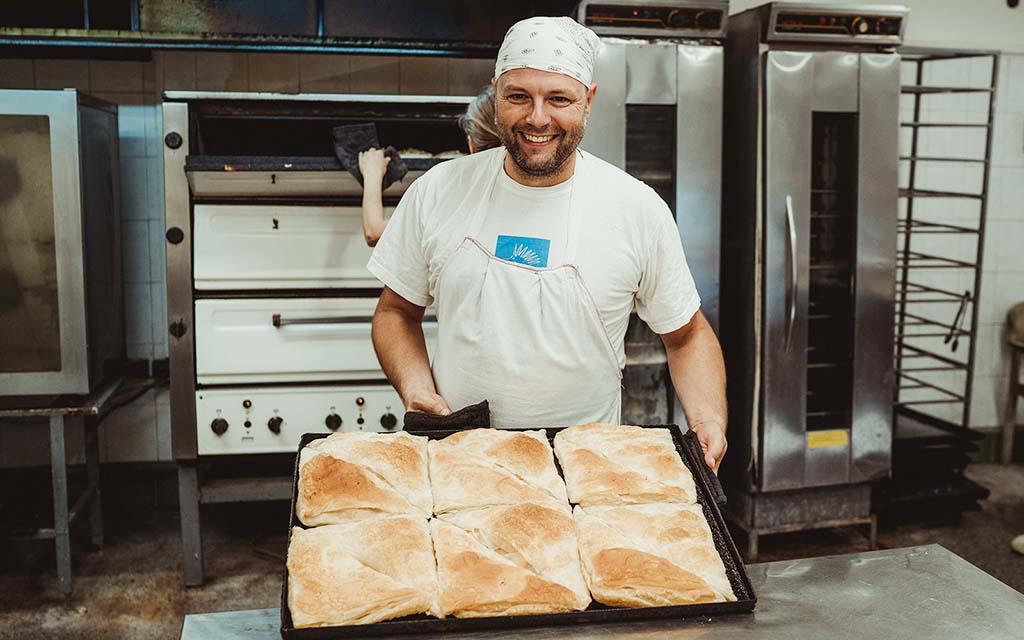
Zhelyzako “Jak” Latinov
The Baker
But that history survives to this day. Zhelyzako “Jak” Latinov moved to Pittsburgh in 2010, drawn by the support the public education system offered his kids. Jak, like many members of the Center, is part of a “new wave” of immigrants who have come from Bulgaria since the end of the Cold War. If you ask him, it is fate—his name translates, literally, to “steel”. He began his business, Jak’s Bakery, back in his home city, but it now operates out of the Center’s large, recently renovated kitchen. The Center offers it to him at a small rent, to help him build capital in America and to honor their own culinary heritage. Jak is giddy when he talks about this: “Everything is so connected. . . . I feel special when I’m saying ‘Oh, I’m a Bulgarian baker in Pittsburgh’. It’s awesome! To be part of it . . . everything’s kind of meant to happen.”
The Bread
Bread is absolutely central. Bulgaria, North Macedonia, and Macedonia border each other, straddling Europe and Asia. For as long as records go back, the region has been a throughway for travelers from many disparate lands, each of whom brought a piece of their own world with them, . . . much like Pittsburgh itself, Jak wagers. Bread became a key part of this history, being the thing that locals offered the weary. “Even if you don’t have anything,” Jak says, “you always have bread and salt to share with strangers.” As well as a staple food, bread became a symbol of Bulgarian folk culture’s core value: hospitality. And Bulgarian bread takes many forms, especially at Jak’s Bakery. From layers of cheesy banitsa to jam-filled kifla crescents, Jak combines traditional recipes with local ingredients to create unique, but storied, treats. Much like Americans have birthday cakes and holiday pies, in Bulgaria, there is a bread for every occasion, including pita za proshtapulnik, a ceremonial bread prepared to celebrate the first steps of a newborn child. Layered with walnuts and sugar, traditionally, it is completed by imprinting the shape of the baby’s feet on top. Jak serves a variation, footless, as a delicious dessert.
The School
Another recent immigrant is Nick Nedev, who has become the head of BMNECC’s Bulgarian Sunday school. Nick says that the community and focus of the Center has been vital to him as a first-generation citizen: “Being immersed in the sounds and the images that I’m used to, from my childhood, allows me to take myself back to where I was born and kinda’ charge me with energy for this quest that I’m on. Y’know, deciding to pursue a better life, in a different country, and still not forget where I came from. Just having that experience, essentially once a week, is beneficial to me. And, at the same time, it’s very important that I pass these traditions that I’m aware of—this wonderful music as well!—to my own children.”
Every week, students enrolled in the Center’s classes practice speaking Bulgarian and learn traditional folk dances. “Moving to a different country is a huge step,” Nick says, “and usually there is a sense of sadness. You miss the homeland. Places like this remind you of where you came from. At the same time, having a school for the kids is a way to not dismiss their past. Just like I am trying to teach my kids the culture and the music—that sense of pride, a lot of parents are treating the school as a way to teach their kids about where their parents are from.”
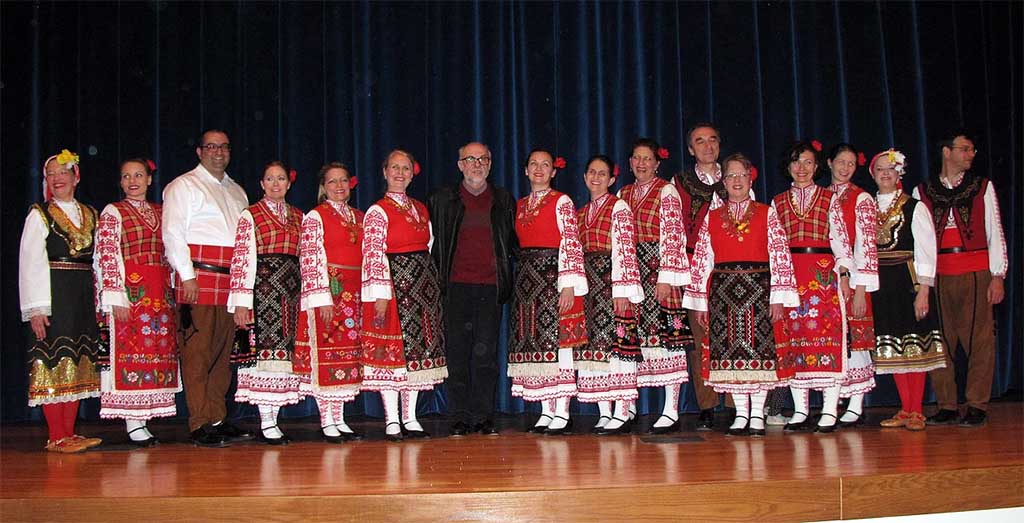
Danka Folk Dance Ensemble
The Dancers
Frances Wieloch is not Bulgarian. She grew up in a Croatian church in Steelton, Pennsylvania, dancing. But in accordance with the Bulgarian code of folk ethics, there is a place for her at BMNECC too. Their two dance troupes—the performance-level Otets Paisii and casual Danka ensemble—focus on the traditional dances of Bulgaria, but offer membership to anyone interested in partaking. Fran is a member of both and, like many of her colleagues, is a former member of the local folk dance legends, the Tamburitzans. (Other alumni include Ed Markoff, multiple staff members, and several performers in Otets Paissii.)
“It’s definitely filled the void for me,” Fran says of BMNECC, reflecting on her participation in folk dance troupes across the world, ranging in traditions from Israeli to Ukrainian. Like many other non-Bulgarians, Fran is drawn to this folk dance—called horo, in Bulgarian—because of its unique rhythms. While American music traditionally employs time signatures like 2/4 or 3/4, Bulgarian folk music is often much faster, ranging from 5/8 to 11/16. This means that the dances are also faster and more challenging, even for veterans like Fran. This challenge has attracted many dancers and exercise enthusiasts from all around the world.
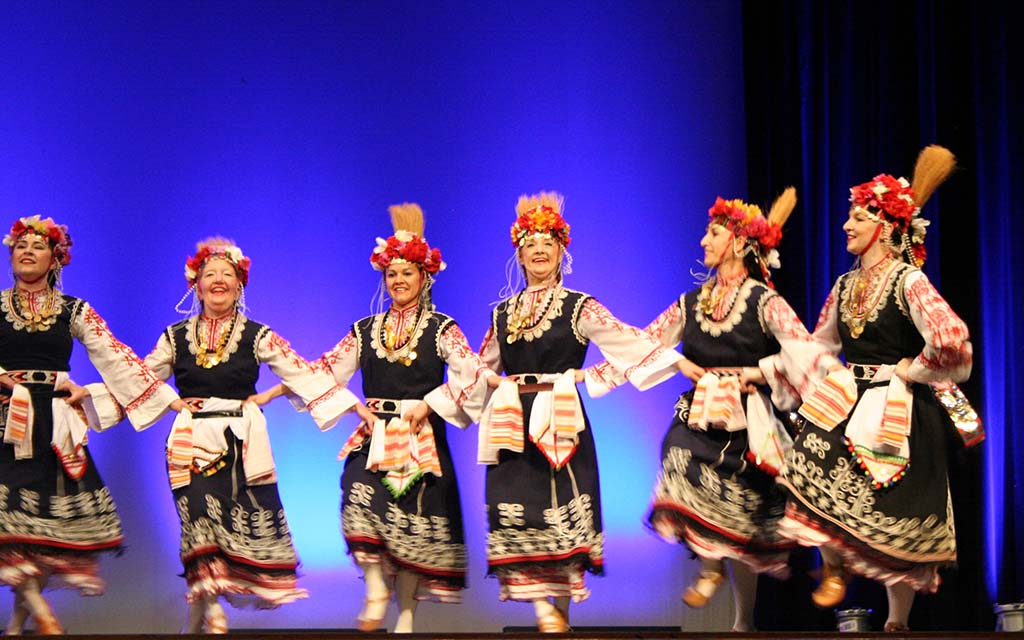
Otets Paissii Dancers
The Dances
Despite being relatively small, Bulgaria and Macedonia are hugely diverse in their geography and culture. Within Bulgaria itself, dance styles range greatly, stemming mostly from the history and topography of the many subregions. As Bilyana Stafura explained it, there is a deep contrast between the fast-paced, highly competitive dances of the Shop region and the modest, elegant dance of Pirin, arising from exchanges with different neighboring countries and the many different contexts in which people danced. She also contrasts the light, wide dances of the Moesia plains with the subtler, smaller dances of the cold Rhodope Mountains, which follows from how the people moved through the different landscapes and different histories. This variety also shows through in Otets Paisii’s costumes, which are based on the clothing rural Bulgarians would have worn in their daily lives. Performances that draw heavily from Moesian dance styles will favor lighter clothing, while performances focused on Rhodope will tend towards heavy, chill-friendly costumes. In a way, each dance performance serves to symbolically recreate the homeland on any stage—adopting the wardrobe and even the physical postures of daily life there, though with a theatrical flourish.
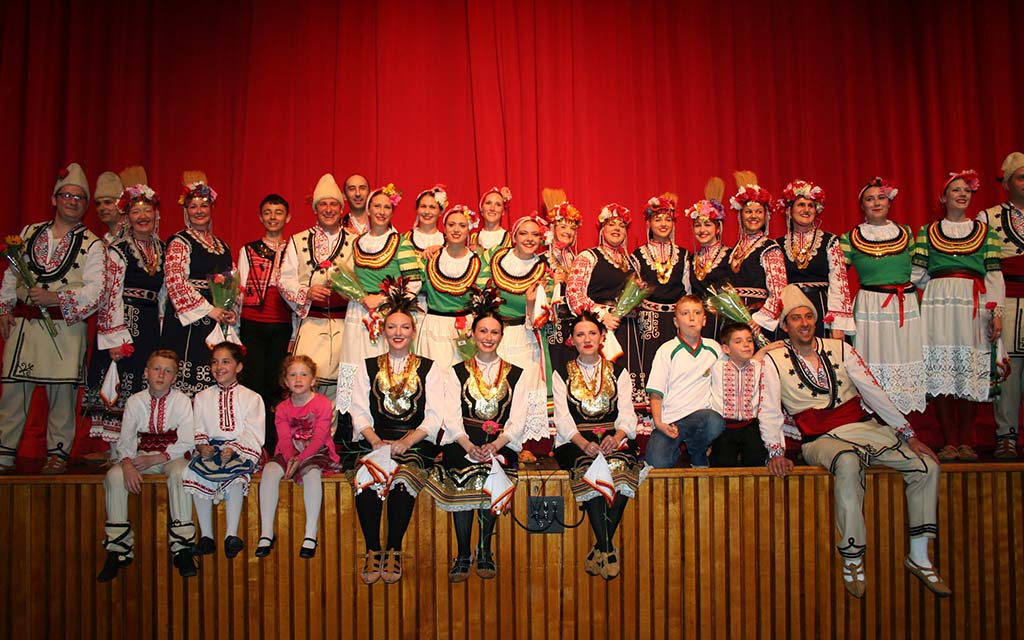
The Ensemble
The Choreographer
As artistic director, Bilyana shapes every Otets Paisii performance. In each show, she tries to incorporate styles from as many of the different folklore regions of Bulgaria as possible, as well as some contemporary movement, while honoring the unique traditions of each. She describes the steps in a performance as part of a “dance vocabulary.” Like learning a language, performers begin by carefully memorizing the physical actions of each step, then slowly piecing them together into routines and then routines into performances. “You have to learn the letters before you can learn the words,” Bilyana says, “and then you can arrange them in a sentence. Before you can write the novel, you need the basic foundations. So, in dance, we learn the foundation. Then we expand on it. We expand the vocabulary. And then we write the poem—we do the dance.”
Since taking charge of the troupe in 2008, Bilyana has worked with Otets Paisii to stage annual shows that are accurate to Bulgarian culture, entertaining to audiences, and collaboratively challenging to the dancers. Bilyana has been dancing all her life, having trained at two national academies back in Bulgaria: “I was five, sitting and watching my brother dancing, and my feet were just going. And the dance teacher told my mother, she will be a dancer!” Just as BMNECC has sought to maintain the folk dances brought over by immigrants to America, in Bulgaria, the government established national academies and dance troupes to professionalize the art. Recent years have also seen a resurgence in informal interest and practice in horo within the Bulgarian people.
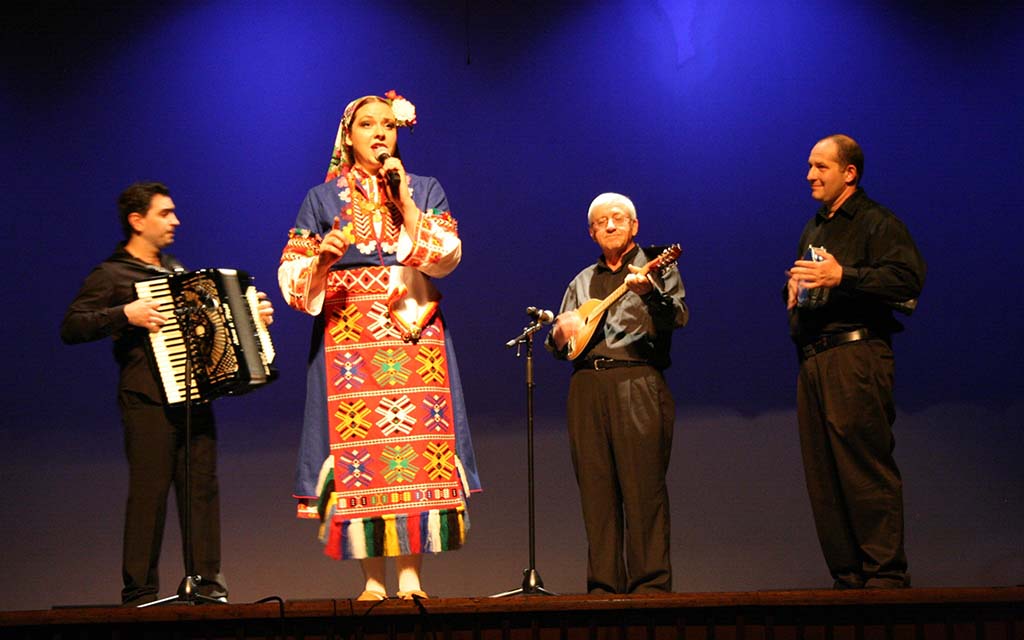
A Musical Performance
The People’s Songs
Bilyana has danced these dances her whole life. “For me, half of my soul is in the folklore,” she says, “It’s how I was able to connect with others, how I was able to find myself as a person, how I was able to cope in life.”
These traditions are held onto, most of the members agree, because they are at once expressive and communal. “It’s community, 100%,” folk musician and frequent player at the Center, Paul Stafura, explains. “It’s the community, and it’s the culture, and it’s the people!” He has played Eastern European ethnic music all his life, in many different venues, and greatly enjoys the niche audiences he performs for.
“People are interested in what you’re doing. . . . They request songs, the whole thing. I think that’s a powerful experience. Most musicians would agree, especially in an ethnic context, that once you get in a crowd, and the crowd’s around you, and everybody’s singing the same songs and they’re arm-in-arm, arms on the shoulders, whatever—it’s a special moment.”
To the patrons of the Bulgarian Macedonian Center, these traditions are alive and vital, connecting them to their ancestry and to the here and now. To the musicians who play there, their audiences are friends that they know well and understand what they are seeking. “We call them ‘people songs’,” says Nick Nedev, “Y’know, the folk songs. Those are the ones that have existed for hundreds of years, and we all know them, and we’re all able to sing them. When a song like that comes on, and you look around, you can definitely see people appreciating it. You can almost just nod at them and it’s like, ‘Yep! I got you.’ It’s an unsaid experience, an unspoken experience.”
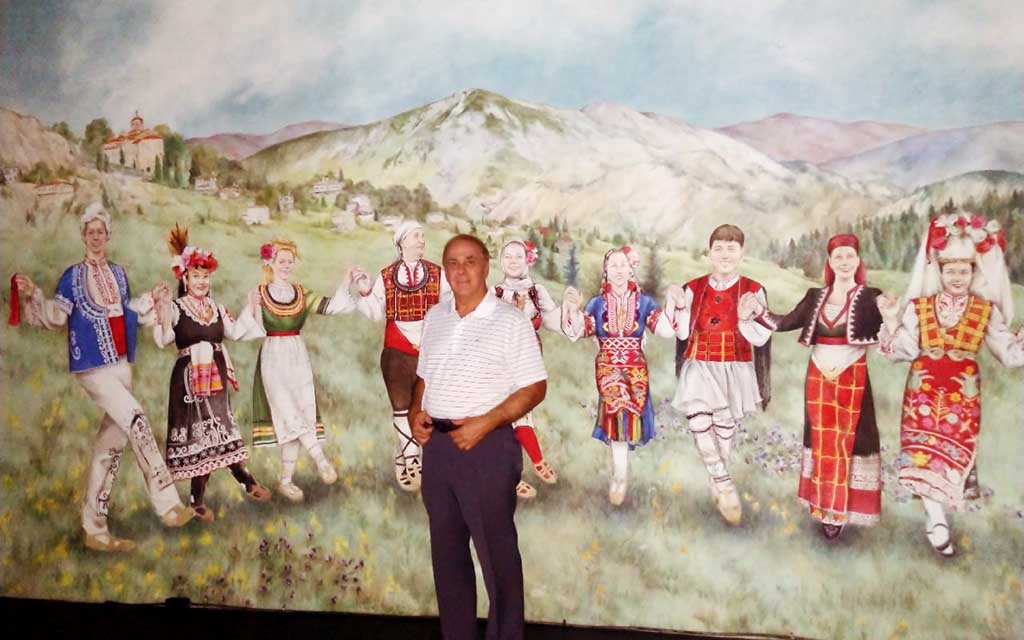
Ed Markoff with the mural featuring dancers at the BMNECC.
The People’s Center
When I visited the BMNECC this fall, I walked in to see the students of a weekly conga class filter out. The Center is available for anyone to rent and often hosts events featuring other forms of folk music, especially other Eastern European bands. As Ed puts it, the Center is focused on “unity in diversity.” This attitude means that, while Pittsburgh’s Bulgarian and Macedonian population have never been relatively large, it has always been the center of the traditional arts scene. Many members recall the Pittsburgh Folk Festival, where immigrant cultures from around the city would gather together to put on public performances and cultural displays. Every year, the crowd would consume huge music halls or the massive convention center, only to end up back at the annual BMNECC afterparty.
“You bring an instrument, you got in for free,” Fran Wieloch recalls, “because you got up on stage and played! Everybody came, everybody played anything. So there was this sense of community, an ethnic community, that the Bulgarian Center fostered. And I think that is part of Bulgarian traditions—to be welcoming. It transcends over to how they live and how they present themselves with culture.” Ed states it more simply: “You never have a bad time at the Bulgarian Macedonian Center.”
It is my belief that BMNECC will celebrate its 92nd anniversary next year because of this, more than anything: because they understand that, if these traditions are to survive—in this place or any place—they are to survive together, in mutual appreciation and respect. Because that is what a tradition exists for. That is what a community exists for. And that, if I may editorialize a bit, is what life exists for.
I wish you all happy holidays, and I thank you for a wonderful year.
Read more in the Heritage Highlights series. Check out this story about the Greensboro Pennsylvania Art Cooporative.

